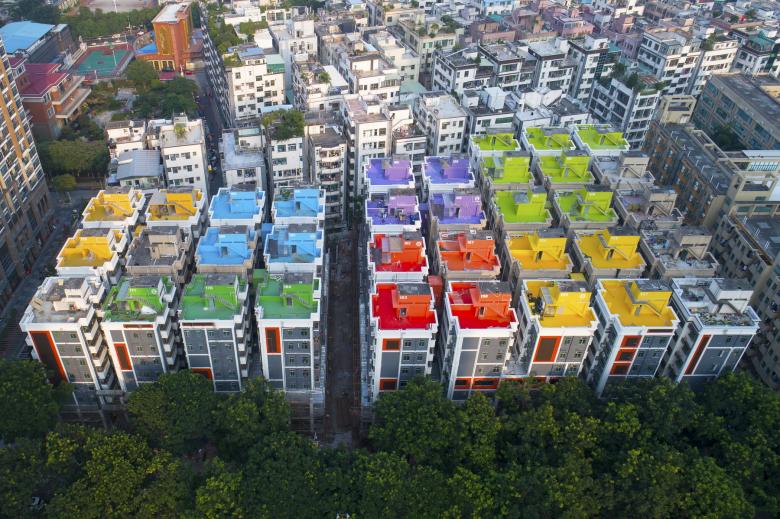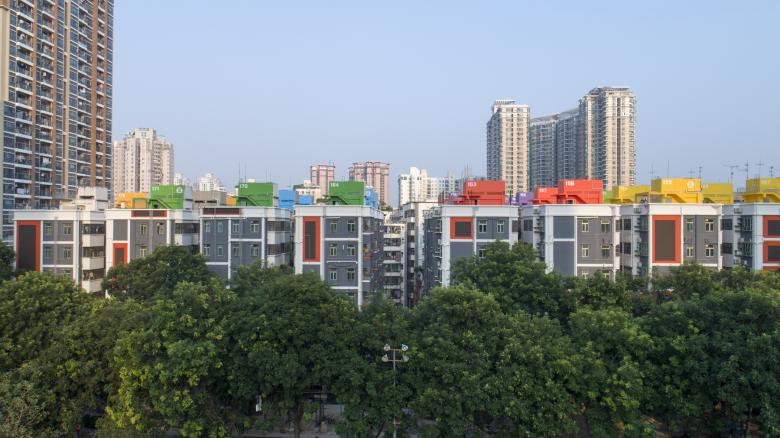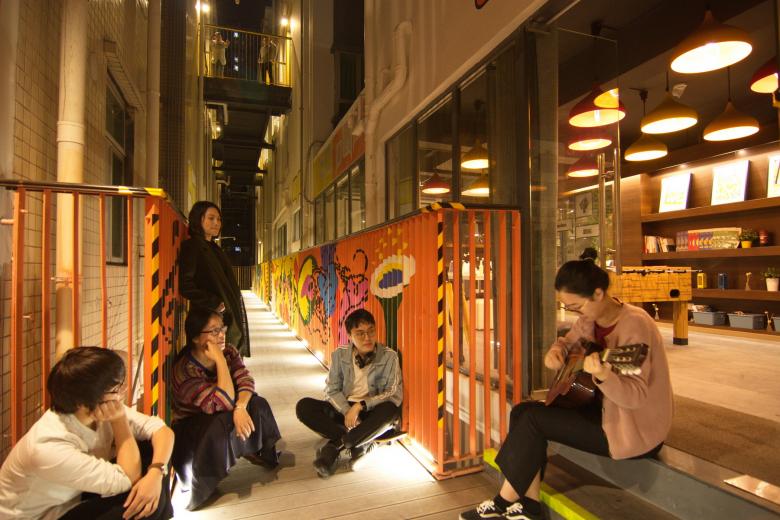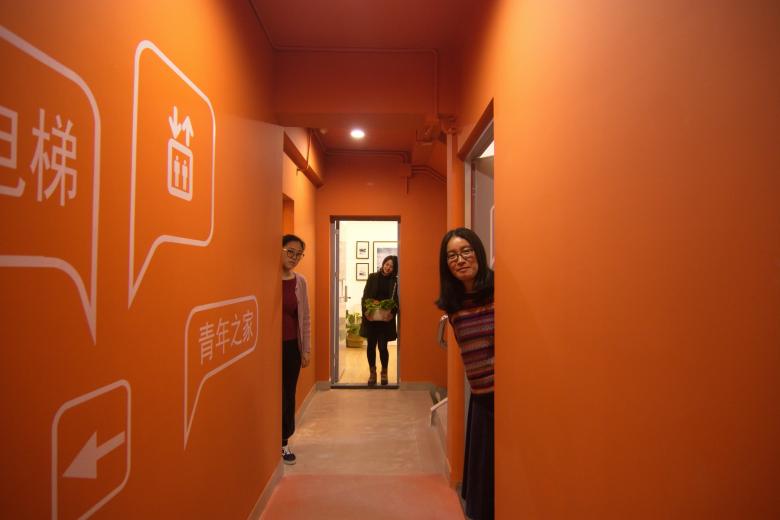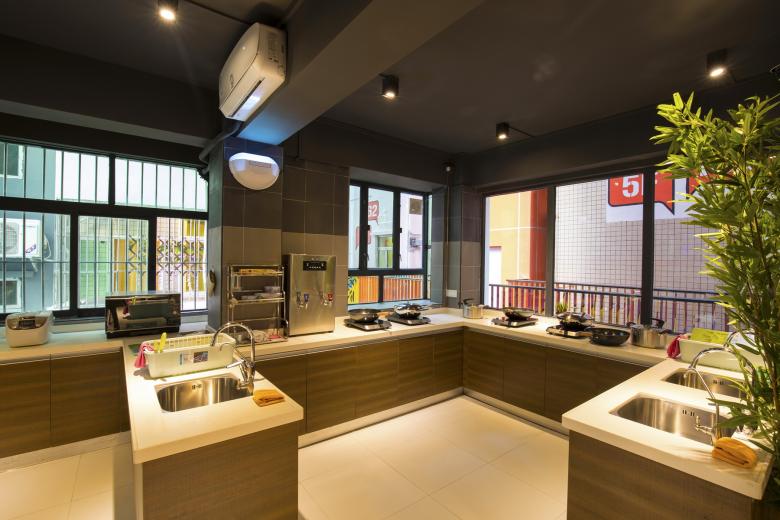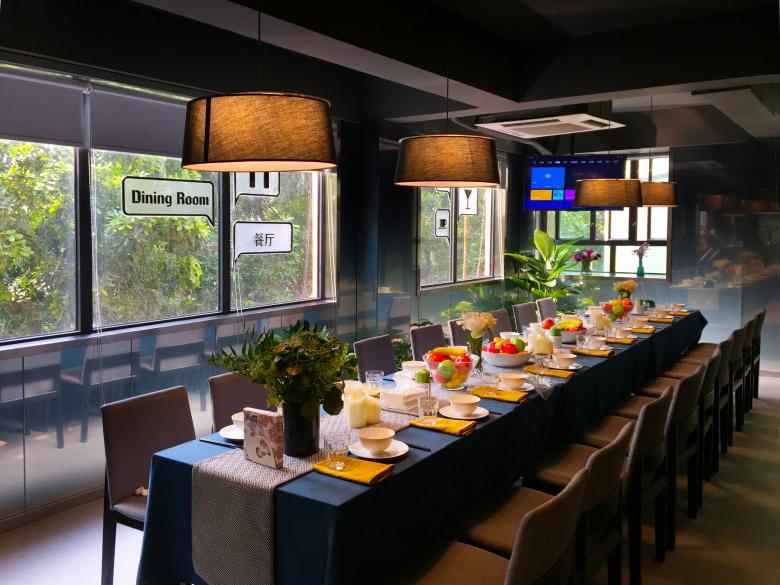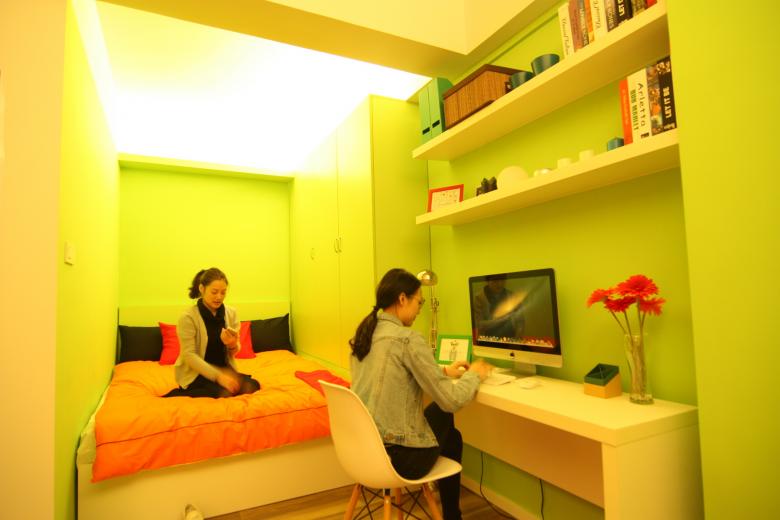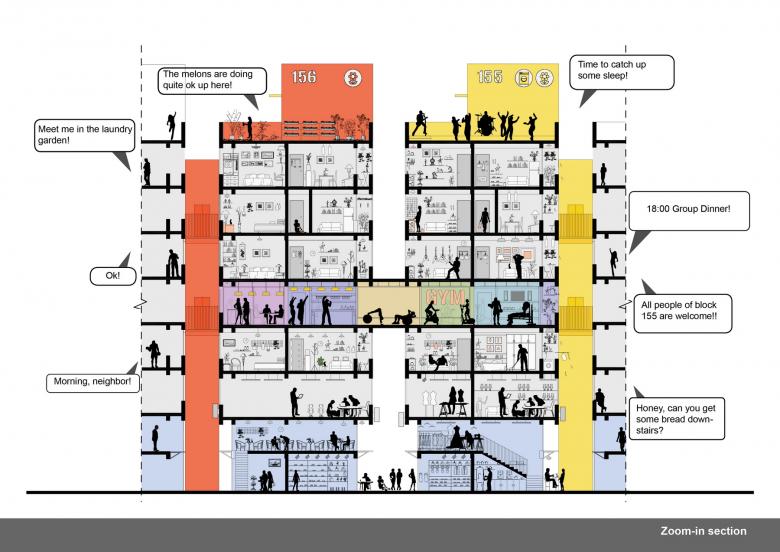Social Incubation in the Urban Village
Eduard Kögel
18. abril 2018
Arial view of Shui Wei International Town. © Doffice
In this first-of-a-kind case, the Shenzhen government has leased 35 handshake towers in an urban village from the former farmers, with the aim of converting them into affordable housing. During the planning phase, six owners of residential towers withdrew, making the situation more complex. To date no conversions at all have taken place – all buildings have been fully demolished and replaced by new constructions – a fact that makes this project by Doffice all the more significant. It shows a new alternative for dealing with this problematic building stock, and simultaneously creates a new dwelling option for the young and the ‘creatives’.
Program: 504 rental units; 200 m2 clubhouse; 8 Entrance courtyards + 7 elevators; 533 m2 of sky corridors
Size: 16.137 m2
Location: Shui Wei Village, Shenzhen, China
Year: 2017–May 2018
Master plan: Doffice
Architecture and Interior: Doffice
Local Collaborator: LDI Urban
Clients: Futian District Government; Shum Yip Land Investment & Development
The so-called ‘handshake tower’ is a typical phenomenon of urban villages in the greater Pearl River Delta area. These stand-alone buildings are between 20 and 30 metres high, with the distance between them as little as 2.5 metres. The former farmers, on whose land this super-dense, new but informal, ‘urban village’, for immigrant low-wage workers were built became wealthy real estate managers. Today, attitudes towards these urban villages have changed because the informality of development has since become a thorn in the side for many people. However, tearing them down is not an option, as there are simply too many of these urban villages. Instead, wherever it pays, new investors are curious to learn how to adapt the situation.
Arial view of Shui Wei International Town in the neighbourhood. © Doffice
Originally the people from the village planned and built the complex with 35 towers separated by14 alleyways. The first two floors were intended to contain shops, but only those located on the edges of the narrow streets have survived. The strategy of Doffice brings a hierarchy to this maze of 14 alleys, with a new master plan organise them into a networked system of public shopping streets and semi-public spaces. Seven of the alleyways are lined by small shops and eateries accessible directly from the outside. Another four lanes will be converted into semi-public areas to give tenants clear and comfortable access to their apartments. The two-storey, former shop zone at ground level is clad with a façade camouflage, intended to suggest a well-developed quarter in a postmodern manner.
Urban Village between formal housing. © Doffice
The project provides more than 500 rental units for 900 residents in 18 different apartment types ranging in area from 12.5 to 45 square metres, in 29 towers. To achieve this, the existing urban village was basically redesigned, and also modernized in line with the living standards of young urban residents. The architects tried to create a community rather than a sum of individual housing units, and to this end mainly placed new interventions between the buildings: seven elevators were added, and connected to each other horizontally on the fifth and seventh floors. This new three-dimensional circulation system forms an important public space for the community, offering an extension of the limited living space of the compact single housing units. Additionally, a colour coding system adds a layer of identity and character.
Sky corridor. © Doffice
Another important public space element in this strategy of adaptation, is a central space of 200 square metres spanning the fifth floors of two adjacent towers. Conceived as a communal living room, the space is equipped with a gym, reading lounge, tea lounge, multipurpose gathering space and a communal kitchen with dining room. An accessible roofscape was added to house public washrooms, vegetable gardens and lounges. It is hoped that the residents will look after the day to day maintenance of these common areas and thus support the growth of a functioning neighbourhood in an unusual residential complex.
Internal corridor. © Doffice
Within what can be described as a hyper-fanatical real estate market, urban villages are now seen as potential sites for new development in central urban areas. However, these ‘handshake buildings’ belong to a kind of urbanisation that is also a part of the history of the region, and it would be very unfortunate for it to disappear completely. After all, a liveable city consists of contradictory spatial structures that can only be enlivened with creativity. With this renovation project, the architects from Doffice have shown an exemplary approach to adapting these structures for alternative living models, that are of interest beyond the creative class in China. Through its high density, this model of affordable housing for young professionals enables social contacts in new constellations that are important for urban coexistence in a civil society. The only irritation is the fake postmodern masquerade on the lower facades, because this leads to the assumption that this project is once again about the maximization of profits, and thus needs ‘nice’ packaging. It would seem to me to be more exciting to invest the money in technical improvements that could ensure that a functioning piece of city is created in these locations.
